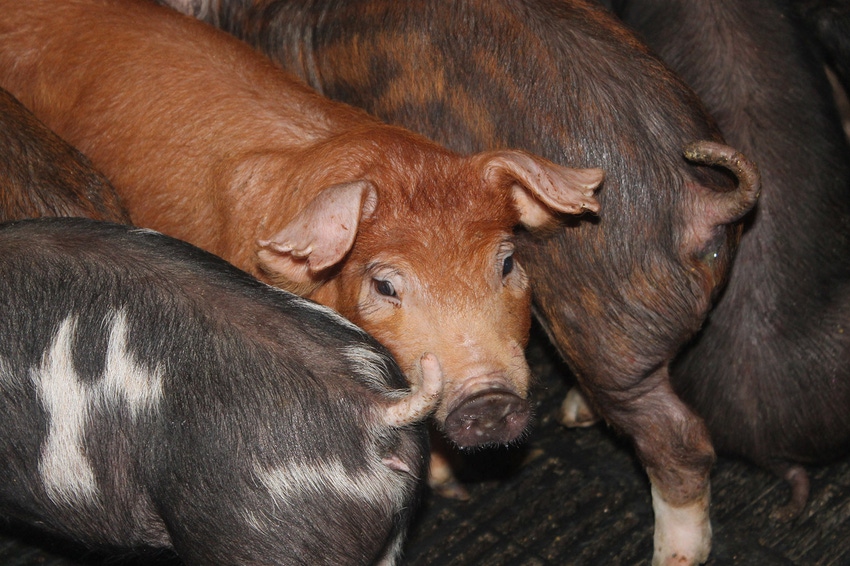Based on biological and technical criteria, a subset of 97 missense SNPs located in 68 lipid metabolism genes was selected to be genotyped in 316 Duroc pigs.
May 4, 2023

Over the past few years, many in silico methods have been implemented to predict the functional consequences of specific amino acid substitutions.
However, in farm animals, the relationship between the predicted functional consequences of missense mutations (an alteration in the DNA that results in a different amino acid being incorporated into the structure of a protein) and their observable impact on the phenotypic variation of complex traits has not been systematically investigated.
Reliability of bioinformatic tools
Researchers from Wageningen University & Research, the Centre for Research in Agricultural Genomics and the Institute of Agrifood Research and Technology, used four in silico tools to predict the functional consequences of 97 porcine SNPs mapping to 68 genes involved in lipid metabolism. In addition, they investigated the association of these missense mutations with 48 lipid traits, paying special attention to mutations that were robustly predicted to have functional consequences by at least three of the four in silico tools. Their aim was to determine whether there is any relationship between the predicted severity of mutations and the number and/or significance of such associations.
Based on biological and technical criteria, a subset of 97 missense SNPs located in 68 lipid metabolism genes was selected to be genotyped in 316 Duroc pigs. Although the gene-centric association analysis between 97 missense SNPs and 48 lipid traits revealed that 65 missense SNPs displayed nominally significant associations with intramuscular fat composition phenotypes, the general conclusion was that there is not a strong relationship between the predicted severity of missense mutations and their association with lipid phenotypes. Mutations mapped to porcine lipid metabolism genes that were predicted to have functional consequences by multiple in silico tools do not seem to determine the phenotypic variation of fatness traits recorded in Duroc pigs.
Multiple genetic, environmental factors
In summary, although the study had some limitations (such as the absence of endophenotypes and a small sample size of certain genetic groups), the results highlight the limitations of anticipating the phenotypic consequences of missense substitutions based on in silico predictions made with dedicated bioinformatic tools. Unlike simple Mendelian phenotypes, complex traits depend on multiple genetic and environmental factors as well as on intricate interaction networks. Basically, the limitations of current bioinformatic tools to predict the potential impact of missense mutations on traits of economic interest in pigs and other farm species are, presently, too substantial for in silico prediction to provide reliable results.
You May Also Like



